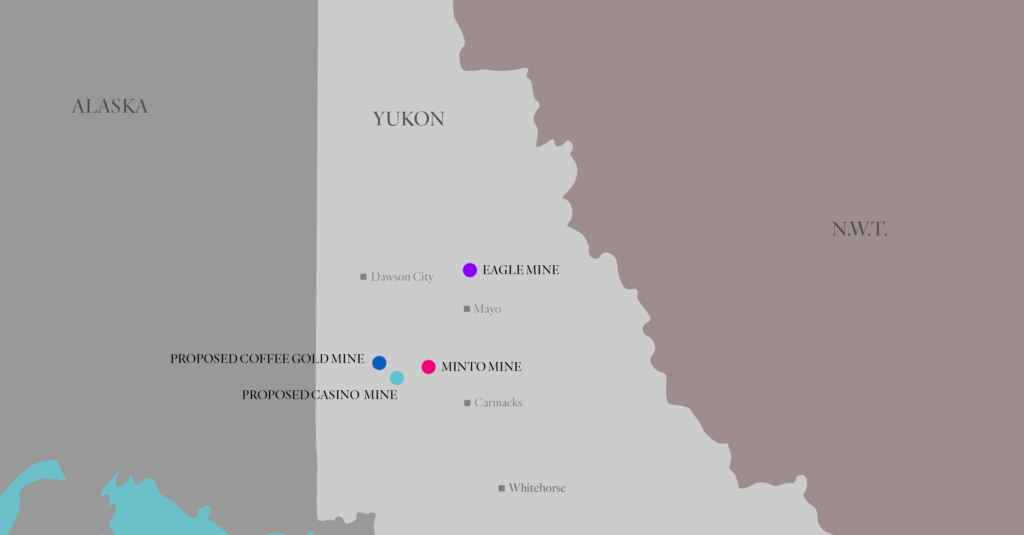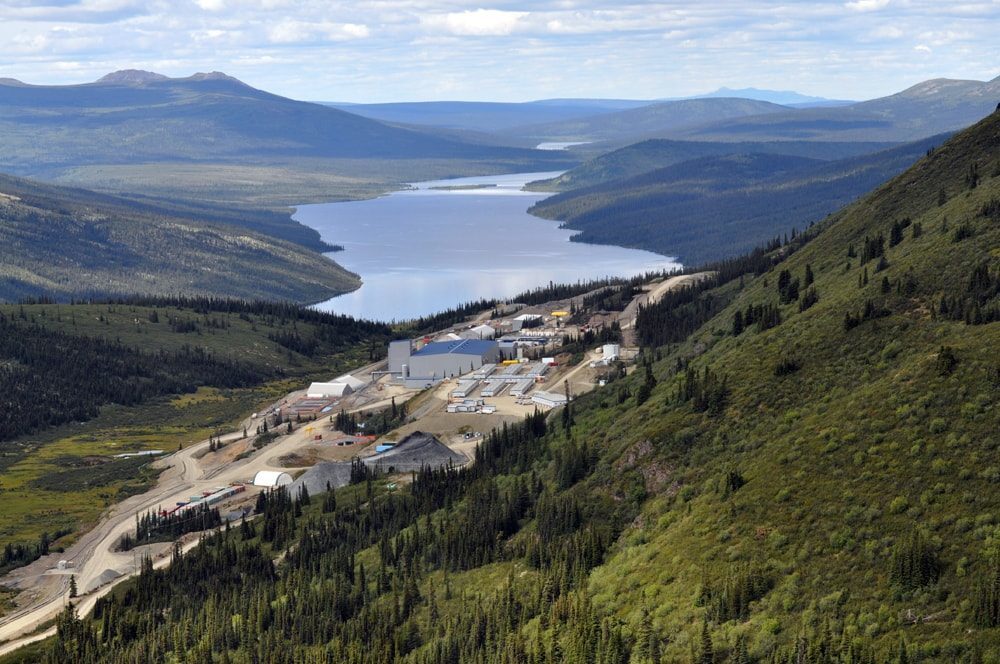
In a Nova Scotia research lab, the last hope for an ancient fish species
Racing against time, dwindling habitat and warming waters, scientists are trying to give this little-known...
The Yukon Water Board has increased the reclamation bond required for the largest operating mine in Yukon by $3.5 million — and, according to the board chair, future increases could be tied to potential impacts of climate change.
“There are design changes that are directly resulting from climate change,” said Piers McDonald, adding these design changes could include increasing the size of settling ponds — basins that make wastewater less turbid — or what’s required through care and maintenance, after the mine closes.
According to a recent order by the water board, financial security required for Victoria Gold’s Eagle Gold mine, located north of Mayo, is now roughly $31 million. That figure has increased from the $27.5 million previously set by the Yukon government.
The company’s president, John McConnell, wasn’t immediately available for comment.

There are two operating mines in Yukon currently — Minto and Eagle. Coffee Gold and Casino are both under review. Map: Carol Linnitt / The Narwhal
Under the Quartz Mining Act, both the Yukon government and the water board have the authority to set financial security, said Sue Thomas, a spokesperson with the Department of Energy, Mines and Resources. She said the water board can set factors to determine financial security for a water licence that doesn’t require approval from the territorial government.
“These days, climate change can be more of a factor requiring water management on site and precipitation management,” Thomas said.
McDonald said the board found certain discrepancies in information supplied by Victoria Gold, such as costs for waste disposal and water management, which has affected the amount of security required.
This follows an incident at the Eagle Gold mine in April, in which Victoria Gold dumped 43 million litres of untreated wastewater — equivalent to roughly 17 Olympic-sized swimming pools — into a gravel-lined sump that filters into groundwater, in order to manage the spring freshet following the highest recorded snowfall in the area since 2007. The incident, first reported by The Narwhal, contravened limits set in Victoria Gold’s water licence, but the alternative was allowing a treatment pond to overflow from the deluge.
The event highlighted the mine’s lack of capacity to brace for the changing weather, something Victoria Gold’s president acknowledged to The Narwhal at the time. While a system for pumping excess wastewater from the treatment pond into another pond on site was underway before the incident, McConnell said, it wasn’t completed in time to manage the heavy freshet.
“The guys were already working on setting up the pump, but we got caught with our pants down because the weather warmed up faster than we expected,” McConnell said.
McDonald, the chair of the Yukon Water Board, said the incident is on the board’s radar, adding that it’s working with inspectors to further investigate what happened. He said it isn’t reflected in the adjusted security levels, but that it could be in the future, adding that when the company submits its next reclamation and closure plan, the water board “will think that problem through.”
McDonald also couldn’t say whether, or to what extent, the increase in security is associated with the effects of climate change, such as heavier precipitation and spring freshets. However, he said those impacts are top-of-mind to those who sit on the board, which could affect decisions regarding security.
“They do want to send clear signals that the regulators are taking (climate change) seriously,” McDonald said. “On a small government like the Yukon’s, it could be quite a serious drain on resources if we don’t plan for it now.”
“Climate change is making a difference.”
Before mines can go into operation, companies are required to pay a reclamation bond to the Yukon government, which keeps that money in a bank, returning it as reclamation work occurs. But the amount of security that is paid by mines is somewhat of a moving target, reviewed every two years, when major mines are required to submit updated reclamation and closure plans. The idea is that as mines expand over the years, so, too, does the required financial security. But there are problems with that, said Lewis Rifkind, mining analyst with the Yukon Conservation Society.
“Two years is a very short time in mining projects,” he said. “When things go wrong, they go wrong in a big way.”
Rifkind said reviewing securities every two years makes it difficult to ensure they’re keeping up with mines as they grow.
And, if a mine goes bankrupt, he said, costs balloon, typically falling on the Yukon government — a result of having to cover care and maintenance costs while legal affairs are settled and reassess original closure plans, which often don’t account for adequate security levels.
“If you just look two years ahead, I worry we’re going to get into the Wolverine situation,” Rifkind said.
The beleaguered Wolverine Mine, which is estimated by the Yukon government to cost more than $35 million to clean up, saw its bankrupt owners walk away, allowing liabilities to increase in their wake, according to a study completed by PricewaterhouseCoopers Inc., which was named receiver for the mine last year.

The cleanup of the Wolverine Mine is estimated to cost more than $35 million, after its bankrupt owners walked away. Photo: Yukon government
A recent Yukon Supreme Court decision confirmed the Yukon government will be the first recipient of dollars flowing from bankruptcy proceedings for Yukon Zinc, the company that built the mine in southeast Yukon, in order to cover clean-up and maintenance costs that now fall on the territory.
Rifkind said this example illustrates that if a company can’t put forward full security for the mine’s life, it raises questions about whether a project should go ahead at all.
“If we’re really concerned about the environment, we should be asking for too much up front,” he said. “Our experience in the Yukon is there never seems to be enough money to clean the sites up. By the Yukon government holding the money, there’s an incentive for the company to do the closure and reclamation because they get the money back, whereas if you pay too little, what’s the incentive? You just declare bankruptcy and walk away.”
The Yukon Water Board, to its credit, Rifkind said, is asking tough questions during public hearings for mines that pertain to long-term effects related to climate change.
“They tend to ask a lot of questions about precipitation and how we’re designing for storms and things like that, but, also, we’re seeing it in the security calculations,” he said. “Of course, in the North, water is one of the things that climate change is going to create a lot of, whether it’s rain, extra snowmelt, [thawing] permafrost — it’s very H2O oriented.”
“The mining companies tend to think 10 or 20 years ahead. The water board is often thinking 100 years ahead.”
The Department of Energy, Mines and Resources is also currently leading a project, in partnership with First Nations and the water board, to mitigate future impacts of climate change on mine sites, such as the overflow Victoria Gold experienced in April.
“The project will develop a document to guide how mines can prepare for climate change and how they continually assess whether the climate is affecting critical infrastructure on the mine site,” Thomas said.
The document should be completed by March 2021, according to Thomas.
Get the inside scoop on The Narwhal’s environment and climate reporting by signing up for our free newsletter. On March 17, federal Conservative Leader Pierre Poilievre...
Continue reading
Racing against time, dwindling habitat and warming waters, scientists are trying to give this little-known...

From investigative reporting to stunning photography, we’ve been recognized with four 2024 CAJ Awards nods...

The Narwhal is expanding its reach on video platforms like YouTube and TikTok. First up?...
